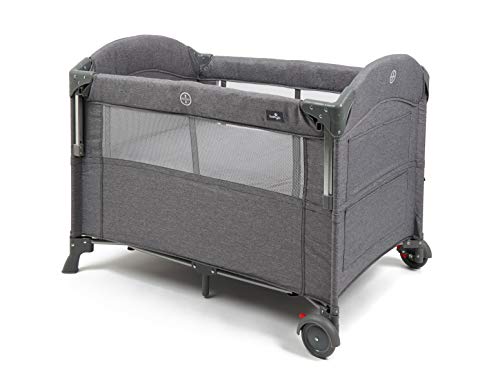Bedside Bassinet: What Nobody Is Discussing

The Ultimate Guide to Choosing a Bedside Bassinet: Safety, Comfort, and Convenience
Introduction
As new parents step into the exciting yet challenging world of child care, one important product that frequently tops the list is a bedside bassinet. These spaces function as a safe sleeping location for newborns while allowing parents to keep close proximity throughout the night. With a myriad of choices readily available on the marketplace today, understanding the features, benefits, and considerations for a bedside bassinet can make a significant difference in the general parenting experience.
This post will explore the various types of bedside bassinets, safety standards, key features to think about, and some often asked questions to assist you make a notified decision.
What is a Bedside Bassinet?
A bedside bassinet is a sleeping space designed for newborns and infants, usually utilized for the very first couple of months of a baby's life. It is normally smaller than a crib and uses the benefit of being placed next to an adult bed, enabling parents to tend to their babies easily throughout nighttime.
Types of Bedside Bassinets
There are a number of types of bedside bassinets available, each developed with special features and advantages:
- Co-Sleeping Bassinets: These are developed to connect securely to the side of the moms and dad's bed, enabling easy access throughout nighttime feedings and reassuring without completely co-sleeping.
- Standalone Bassinets: These are free-standing variations that sit beside your bed however do not attach. While they take up more space, they can in some cases use a larger sleeping location.
- Travel Bassinets: Lightweight and portable, these bassinets are designed for households on the go. Bedside Cot For Experienced Parents can be folded or dismantled quickly, providing convenience while traveling.
- Convertible Bassinets: Some designs can transform into cribs or playards, extending their life expectancy and making them a more economical option.
Advantages of Using a Bedside Bassinet
Deciding for a bedside bassinet can give many benefits, consisting of:
- Convenience: Parents can easily access their baby during the night for feeding, comforting, or diaper modifications without rising.
- Safety: Bassinets are developed particularly for infants, frequently adhering to safety standards that help in reducing the danger of Sudden Infant Death Syndrome (SIDS).
- Comfort: Babies can feel protected with their parents close by, promoting a sense of security that is conducive to better sleep.
- Space-saving: Bedside bassinets are typically compact and easy to fit in smaller bedrooms.
Key Safety Features to Consider
When choosing a bedside bassinet, guaranteeing safety is vital. Here are a couple of necessary security functions to consider:
- Stable Base: Ensure the bassinet has a tough structure that can not topple quickly. Examine that wheels lock into place to avoid motion.
- Breathable Fabrics: Look for products that enable air flow to reduce the danger of suffocation.
- Height Adjustability: A bassinette that adapts to the height of your bed can boost security and convenience.
- No Drop Sides: Select designs that do not have drop sides, as they can position a threat of the baby falling out or getting caught.
- Accreditation: Always guarantee that the bassinet complies with security requirements set by acknowledged agencies like the American Academy of Pediatrics (AAP).
Extra Features to Look For
Aside from security, here are some extra functions to consider when searching for the best bedside bassinet:
- Storage Space: Some bassinets feature built-in storage for basics like diapers, wipes, and clothing.
- Rocking or Gliding Mechanism: This can help relieve babies who have difficulty settling down to sleep.
- Noise and Light Features: Some models consist of soothing noises, nightlights, or projections that can help soothe infants to sleep.
- Washable Components: Make sure detachable covers and sheets are device washable for easy cleansing.
Choosing the best bedside bassinet is an important decision that can profoundly influence the early parenting experience. By comprehending the different types readily available, their advantages, necessary safety functions, and extra benefits, parents can make an informed option to make sure both their baby's convenience and safety.
Eventually, the best bedside bassinet need to cater to individual family requires while boosting the bond between parents and their newborns throughout those valuable first few months.
FAQs about Bedside Bassinets
1. For how long can I use a bedside bassinet for my baby?
A lot of bassinets are designed for infants up to about 4 to 6 months, or till the baby can roll over, bring up, or surpass the weight limit defined by the manufacturer (usually around 20-30 pounds).
2. Are bedside bassinets safe for co-sleeping?
While bedside bassinets provide close distance, it's crucial to ensure they're securely connected to the bed. Constantly follow guidelines for safe sleeping to minimize the danger of SIDS.
3. Can I use a bedside bassinet for an early baby?
Yes, numerous bedside bassinets can accommodate early infants. However, it's vital to talk to a pediatrician for suggestions based on your baby's specific requirements.
4. What should I search for in terms of mattress safety in a bedside bassinet?
Make certain that the mattress fits securely against the sides of the bassinet without any spaces. The mattress needs to be firm and covered with a fitted sheet to decrease the threat of suffocation.
5. Exist Bedside Cot For New Parents cleansing guidelines I should follow?
Many bassinets have removable covers that can be cleaned. Constantly follow the maker's instructions for cleansing and preserving the bassinet.
By attending to these concerns, parents can browse the decision-making process relating to bedside bassinets more successfully, making sure security and convenience as they invite their kid into the world.

